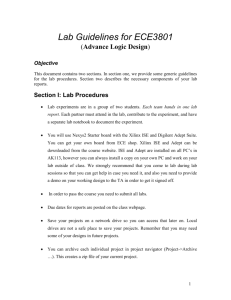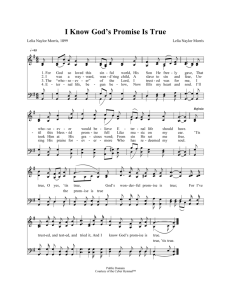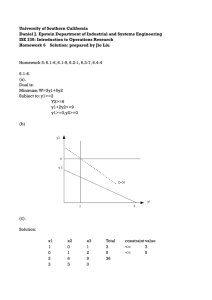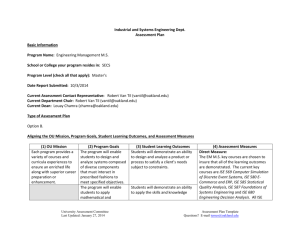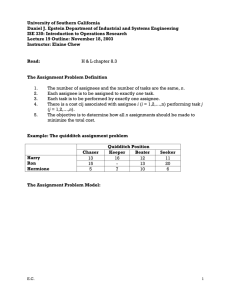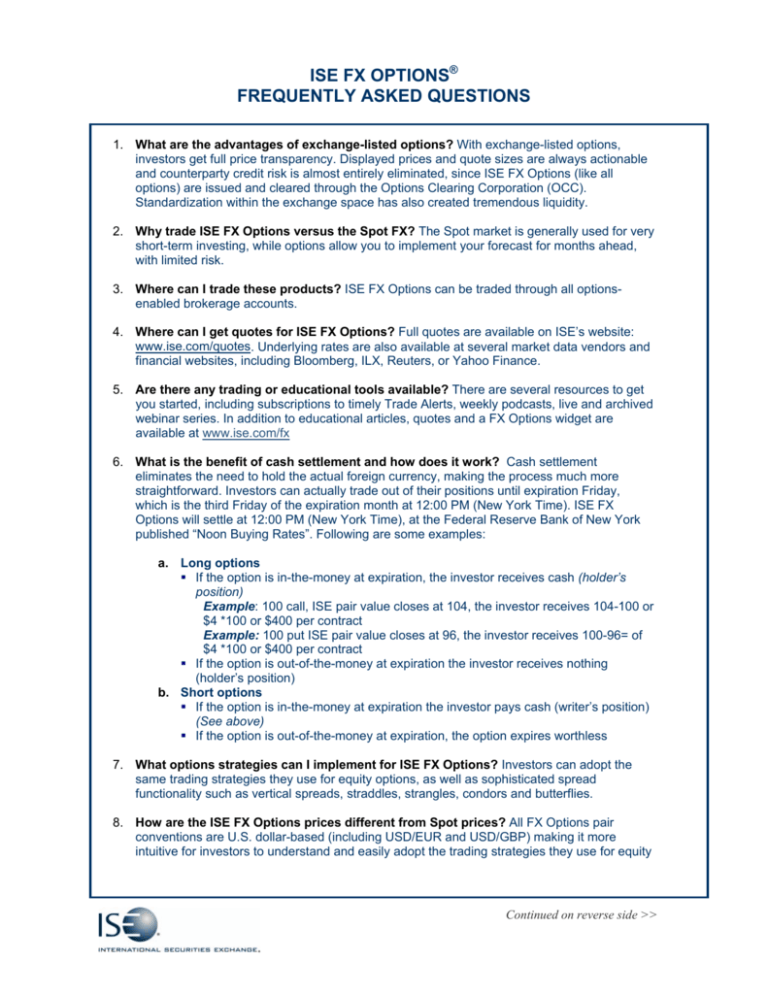
ISE FX OPTIONS®
FREQUENTLY ASKED QUESTIONS
1. What are the advantages of exchange-listed options? With exchange-listed options,
investors get full price transparency. Displayed prices and quote sizes are always actionable
and counterparty credit risk is almost entirely eliminated, since ISE FX Options (like all
options) are issued and cleared through the Options Clearing Corporation (OCC).
Standardization within the exchange space has also created tremendous liquidity.
2. Why trade ISE FX Options versus the Spot FX? The Spot market is generally used for very
short-term investing, while options allow you to implement your forecast for months ahead,
with limited risk.
3. Where can I trade these products? ISE FX Options can be traded through all optionsenabled brokerage accounts.
4. Where can I get quotes for ISE FX Options? Full quotes are available on ISE’s website:
www.ise.com/quotes. Underlying rates are also available at several market data vendors and
financial websites, including Bloomberg, ILX, Reuters, or Yahoo Finance.
5. Are there any trading or educational tools available? There are several resources to get
you started, including subscriptions to timely Trade Alerts, weekly podcasts, live and archived
webinar series. In addition to educational articles, quotes and a FX Options widget are
available at www.ise.com/fx
6. What is the benefit of cash settlement and how does it work? Cash settlement
eliminates the need to hold the actual foreign currency, making the process much more
straightforward. Investors can actually trade out of their positions until expiration Friday,
which is the third Friday of the expiration month at 12:00 PM (New York Time). ISE FX
Options will settle at 12:00 PM (New York Time), at the Federal Reserve Bank of New York
published “Noon Buying Rates”. Following are some examples:
a. Long options
If the option is in-the-money at expiration, the investor receives cash (holder’s
position)
Example: 100 call, ISE pair value closes at 104, the investor receives 104-100 or
$4 *100 or $400 per contract
Example: 100 put ISE pair value closes at 96, the investor receives 100-96= of
$4 *100 or $400 per contract
If the option is out-of-the-money at expiration the investor receives nothing
(holder’s position)
b. Short options
If the option is in-the-money at expiration the investor pays cash (writer’s position)
(See above)
If the option is out-of-the-money at expiration, the option expires worthless
7. What options strategies can I implement for ISE FX Options? Investors can adopt the
same trading strategies they use for equity options, as well as sophisticated spread
functionality such as vertical spreads, straddles, strangles, condors and butterflies.
8. How are the ISE FX Options prices different from Spot prices? All FX Options pair
conventions are U.S. dollar-based (including USD/EUR and USD/GBP) making it more
intuitive for investors to understand and easily adopt the trading strategies they use for equity
Continued on reverse side >>
ISE FX OPTIONS®
FREQUENTLY ASKED QUESTIONS
options. For example, if you think the USD will strengthen, you would buy calls or if you think
it the dollar will weaken, you would buy puts.
9. Is there a readily available calculator I can use to view the “Greeks”? Yes, just go to
ISE’s quotes page: www.ise.com/quotes
10. What impacts the ISE FX Options currency pair movement? Currency markets are
impacted by many macro-economic factors, including interest rates, GDP, productivity levels
and investment flows.
11. How do I make my price forecast for FX Options? This is a personal choice for every
investor. Some employ fundamental analysis, while others look to technical analysis (charts)
such as Fibonacci, Candle Sticks or Moving Averages. Some investors use a mixture of both
fundamental and technical analysis.
12. I understand that the ISE FX Options are "Exercised" on a European Style basis
but can they be bought and sold prior to expiration in order to lock-in a profit or cut a
loss like equity options? Yes, ISE FX Options can be traded throughout the trading day
and do not need to be held till expiration. Since they are European Style, meaning they
cannot be exercised till expiration, investors that are short an option don’t have to worry
about early exercise risks such as being assigned to deliver or receive the underlying.
Regardless if you are long or short, you can change your mind and trade out of that position
at any time during market hours.
13. Do ISE FX options increase or decrease in value by a given percentage multiple prior
to the expiration date? If so, what is this percentage and does this cost correlate with
the spot price per pip? No, each option is going to have differing “Deltas”, based on the
strike price and time frame selected. In Options, risk is quantified in the “Greeks”, the most
important of which, is the “Delta”, which measures the amount the option should change
based on the underlying value - one unit (1 ISE FX value point). The other Greeks (Gamma,
Theta, Rho and Vega) also apply to ISE FX Options in a much the same fashion that they
apply to equity options.
14. Is it true that the ISE FX Option increments per point is equal to a dollar and that one
contract is approximately equal to one Mini-Lot in the retail FX Spot market? ISE FX
Options are options based on the exchange rate itself. They do not carry an exact notional
value, but it can be calculated by multiplying 100 x pair value. For example, if USD/YEN
(YUK) is trading at 100, just take 100 (premium multiplier) x $100 = $10,000.
15. How would you describe the "Correlation Coefficient Ratio" between the ISE Currency
Pair options and the Spot Cash market? Does one normally tend to lead the other
market? The correlation is extremely high, since ISE FX Options are mimicking the spot
prices on a real-time basis. Underlying Rate = rate x rate modifier
For some examples, see below
Convention
USD/AUD
USD/GBP
USD/CAD
USD/EUR
USD/CHF
USD/JPY
Rate Modifier
100
100
100
100
100
1
Example
108.52 (1.0852 x 100)
50.82 (0.5082 x 100)
101.49 (1.0149 x 100)
67.50 (0.6750 x 100)
108.46 (1.0846 x 100)
106.90 (106.90 x 1)
ISE FX OPTIONS®
FREQUENTLY ASKED QUESTIONS
16. Which strike price should I buy, given a certain view on currency pair? As options
provide for any number of strategic approaches to any situation, investors need to find a
balance of risk and reward that is suitable for them. ITM (in-the-money) call or put options
cost more, but are the most responsive to the underlying exchange rate (Delta), while OTM
(out-the-money) options have less dollar risk but also lower deltas. This means they have the
lowest responsiveness to the underlying exchange rate. ATM (At-the-money) is a hybrid of
the two.
17. Is the shortest "Expiration Period" 1 month or are there any shorter expirations
period? The shortest expiration period is 1 month, although ISE FX Options are available for
varying months, with the longest term being 10 months.
18. What are the aggregate premiums that my broker will charge me? Just like equity
options, the premium quoted at the ISE x 100*. For example, if you buy an option for $2.00,
the total premium will be $2.00 x 100 or $200, not including your broker’s commission. This
premium is paid in cash at the time of the trade.
19. What other options education resources are out there? For more general options
education and tools, visit www.optionseducation.org, an Options Industry Council (OIC) site.
ISE FX Options®, the ISE globe logo, International Securities Exchange® and ISE® are trademarks of
the International Securities Exchange, LLC. Options involve risk and are not suitable for all investors.
Prior to buying or selling an option, a person must receive a copy of Characteristics and Risks of
Standardized Options. Copies of the document may be obtained from your broker or from the
International Securities Exchange by calling (212) 943-2400 or by writing the Exchange at 60 Broad
Street, New York, NY 10004. © 2009, International Securities Exchange, LLC. All rights reserved.

